Sjogren Syndrome: Dry Eyes and Dry Mouth
Sjogren syndrome is a chronic disease caused by immunologically mediated destruction of the lacrimal and salivary glands. It is characterized by dry eyes (keratoconjunctivitis sicca) and dry mouth (xerostomia). Sjogren’s syndrome is slowly progressing autoimmune disease characterized by lymphocytic infiltration of the exocrine glands.
The major infiltrating cells in the affected exocrine glands are activated T lymphocytes (CD4+ helper T cells) in mild lesions, whereas B cells prevail in severe lesions.
Types
- Primary (isolated)-Sicca Syndrome, it has only Sjögren Syndrome.
- Secondary (associated with few more illnesses)- In this variety Sjögren Syndrome is associated with few more autoimmune illnesses. Rheumatoid arthritis is the most common associated disorder, while other patients have SLE, polymyositis, scleroderma, vasculitis, mixed connective tissue disease, or autoimmune thyroid disease.
Pathogenesis
The pathogenesis of Sjögren syndrome remains obscure, but activation of autoreactive T cells and B cells is the trigger for tissue infiltration and injury. What triggers such auto reactivity is uncertain in few cases and few cases occur after Viral illness. Viral infection of the salivary glands causes local cell death and release of tissue self-antigens, these escaped self-antigens can trigger autoreactive T cells and B cells. Middle-aged women (50-60 years) are primarily affected and female to male ratio is 9:1
Serological studies-
Antibodies against two ribonucleoprotein antigens are seen.
- SS-A (Ro)
- SS-B (La)
Autoantibodies to Ro/SS-A and La/SS-B antigens are associated with earlier disease onset, longer disease duration, salivary gland enlargement, extra glandular (systemic) manifestations, and more intense lymphocytic infiltration of minor salivary glands.
Clinical symptoms
Due to inflammatory destruction of Exocrine glands
- Oral symptoms and signs due to Salivary Gland destruction and infiltration- Xerostomia (Dry Mouth) results in difficulty in swallowing solid foods, a decrease in taste, cracks and fissures in the mouth, and dryness of the buccal mucosa. Patients also have dental caries and halitosis despite good oral hygiene. Parotid gland enlargement is present in half the patients.
- Ocular symptoms due to Lacrimal gland involvement- Keratoconjunctivitis (inflammation of cornea and conjunctiva) leads to blurred vision, burning, and itching in eye. Patients characteristically describe a sandy or gritty feeling under the eyelids. There is accumulation of secretions in thick strands at the inner canthi, decreased tearing, eye fatigue, and increased photosensitivity. This eye condition is also called keratoconjunctivitis sicca, and destruction of corneal and bulbar conjunctival epithelium is the root cause of all ocular symptoms in Sjogren’s Syndrome.
- Involvement of other Exocrine Glands- There is decrease in mucous gland secretions of the upper and lower respiratory tree, resulting in dry nose, throat, and trachea. Dyspareunia may occur due to dryness of the external genitalia.
Extra glandular / Systemic Manifestation
- Nonspecific- in this easy fatigability, low-grade fever, Raynaud’s phenomenon, myalgias, arthralgias, and arthritis are included.
- Parenchymal organ involvement by lymphocytes- most common organs involved are lung, kidney and liver.
- Immune complex-mediated pathology- Causes Vasculitis, glomerulonephritis and peripheral neuropathy.
- Lymphoma development.
Diagnosis
Revised International Classification Criteria for Sjögren’s Syndrome is described in visual maps. Please refer to Harrison 20th edition, chapter 354 for further reading.
...
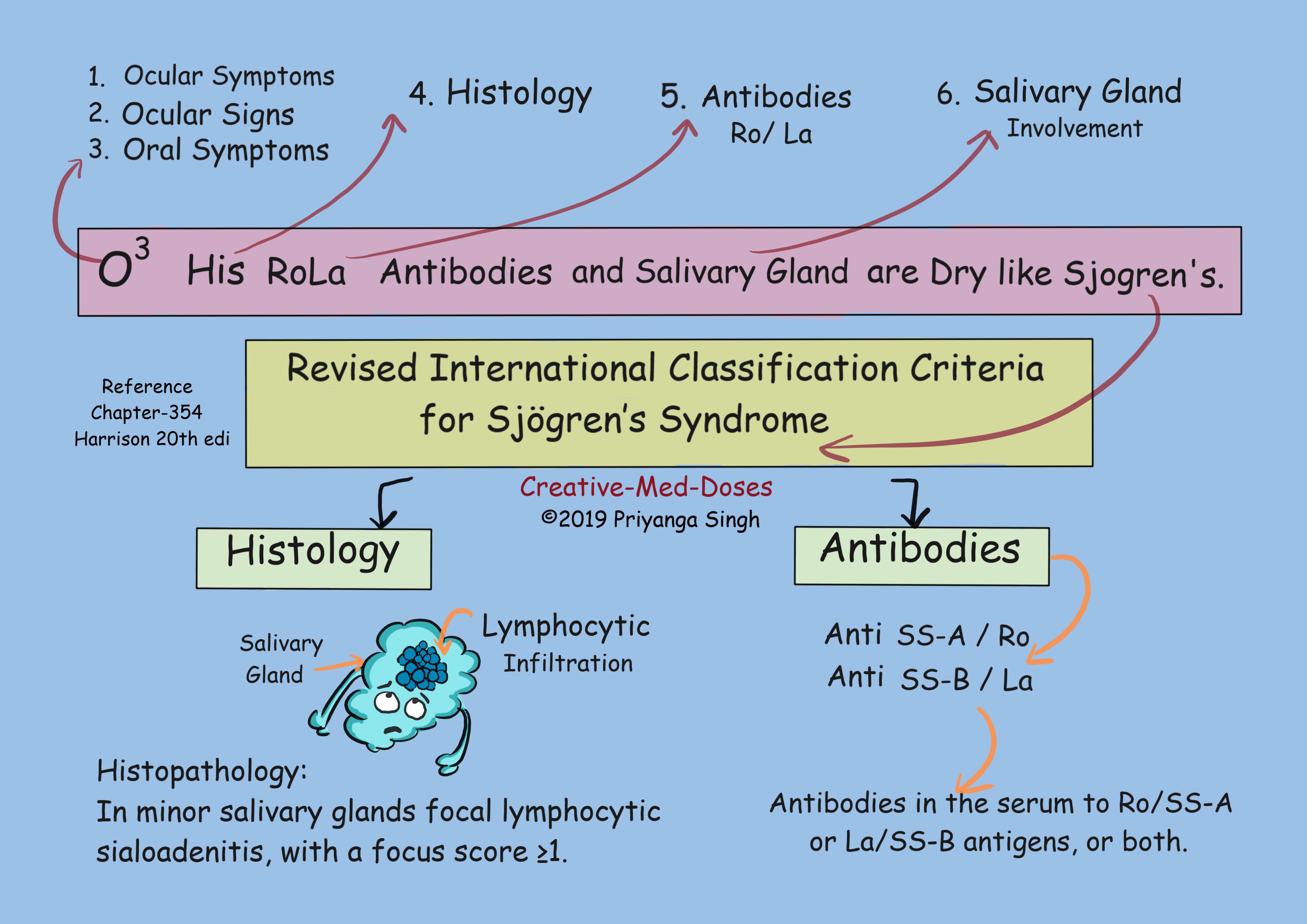
...
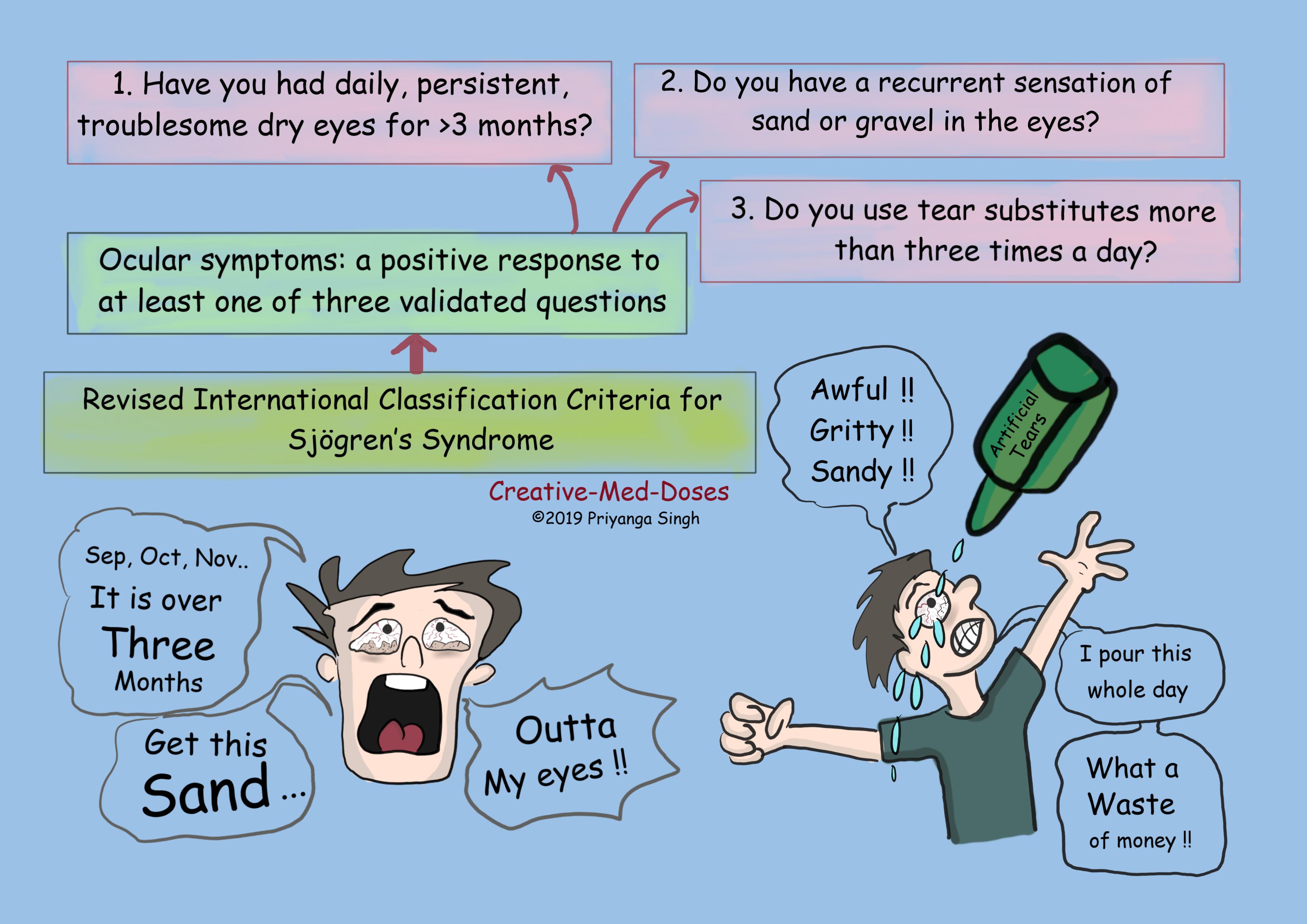
...
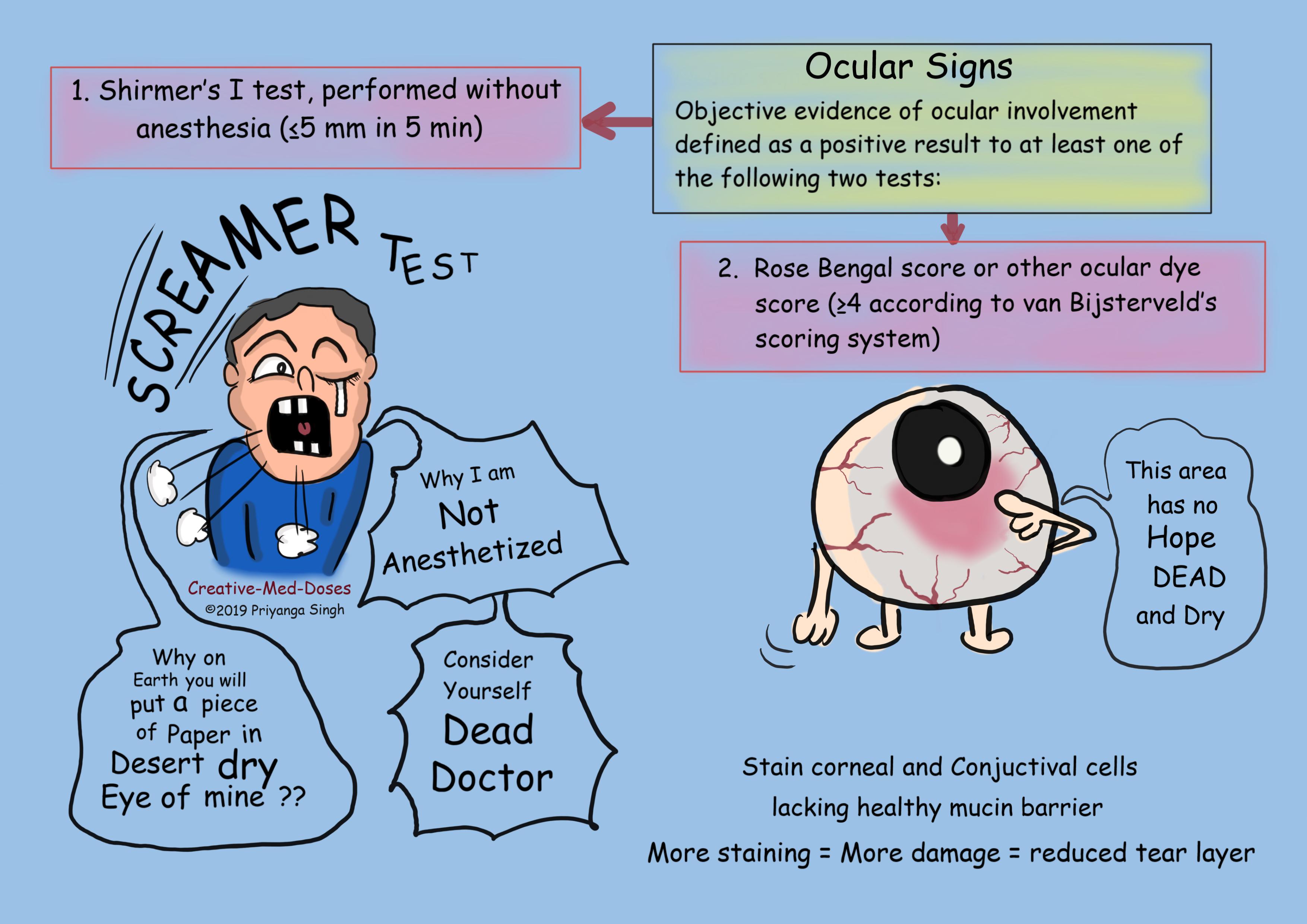
...
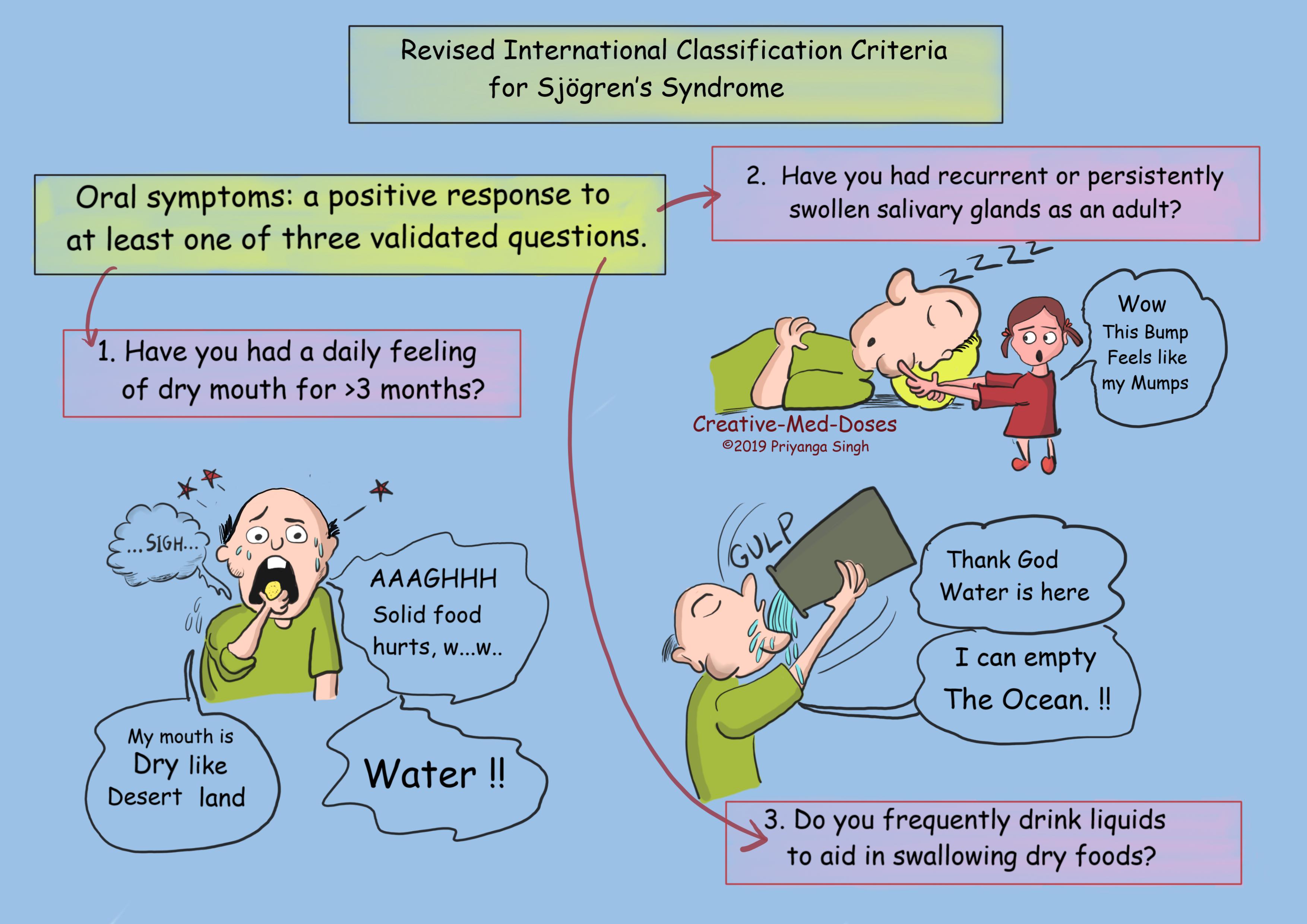
...
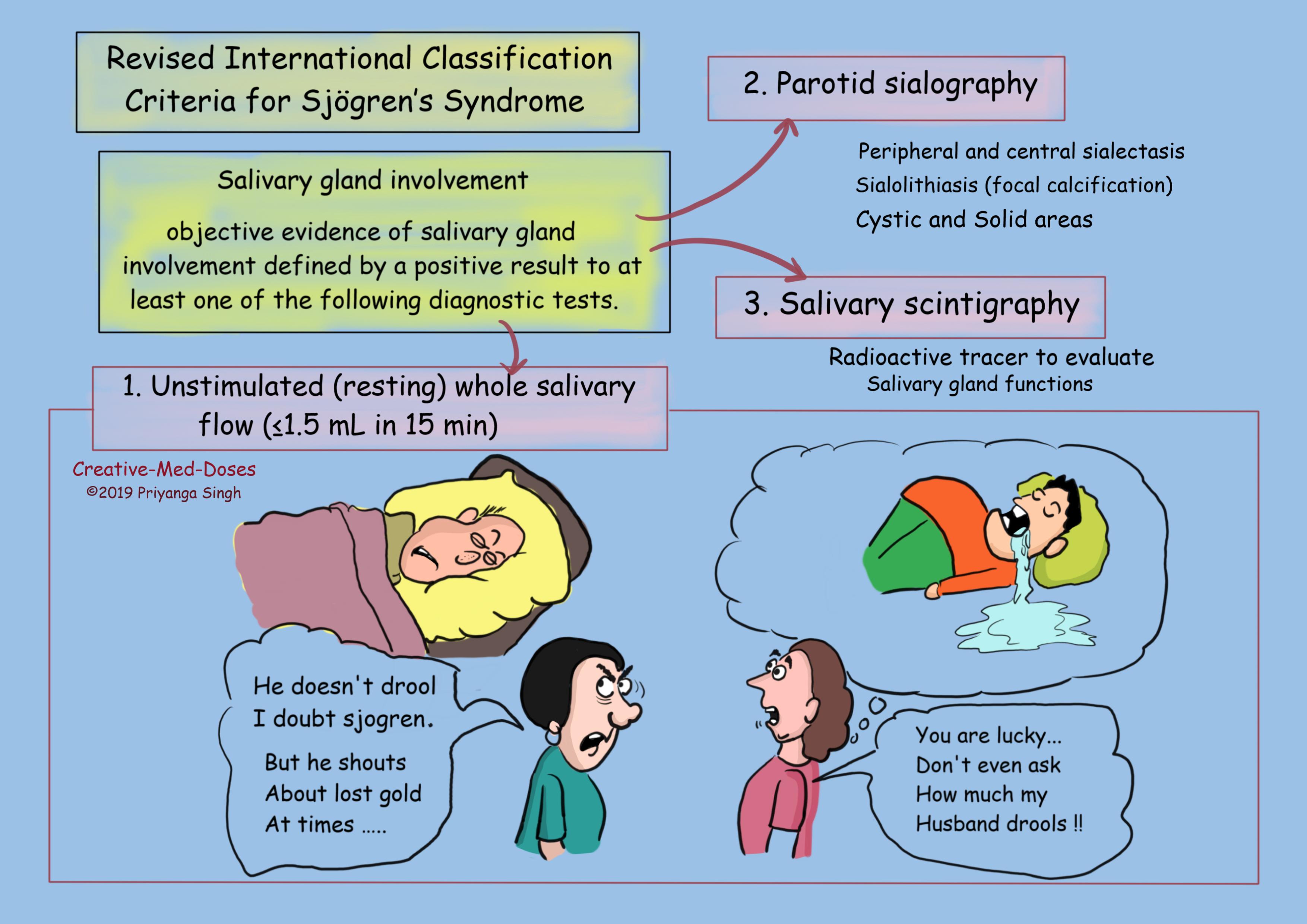
...
Treatment
Mostly symptomatic and targeted towards reducing the damage caused by dry eyes and dry mouth.
- Artificial tears without preservative
- Pilocarpine, cevimeline for systemic stimulation works for dry eye and dry mouth.
- Systemic manifestations are treated accordingly. Reference book Harrison 20th edition.
Quick review https://www.youtube.com/watch?v=nXXqeE1JIE4#action=share
Revision topic https://creativemeddoses.com/topics-list/kartagener-syndrome-where-cilia-doesnt-move/